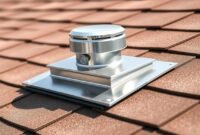Don’t forget to check the gas furnace vent pipe code when installing the home’s gas furnace. After all, it has become a favorite and preferred heating appliance among homeowners.
Because you will have to deal with installation and such things, paying attention to the proper installation code is crucial. You must address some regulations to ensure your installation is correct and appropriate.
The Benefits of Gas Furnace
Why would people like gas furnaces? They have been proven to be reliable and efficient in meeting homeowners’ heating needs.
The flue (a term referring to the vent pipe) is the important component of the furnace that transports the emissions from the combustion (heating) process to the outside of the house. If you have the flu, you don’t have to worry about any toxic gas or combustion byproduct that will linger inside the house.

The Different Types of Venting
We should first discuss the different types of vents. After all, you want to keep your family safe from harm. Understanding the different types of vents is essential when discussing it. Choosing the right venting style ensures safety by preventing toxic gas accumulation and reducing fire risks.
As a home inspector, I’ve often encountered installations where improper venting led to significant safety hazards. For example, high-efficiency furnaces often use PVC pipes for venting, and manufacturers have specific installation guidelines.
Common issues include vents terminating too close to windows or having too many elbows, which can cause backdrafting and inefficient venting. Here are some of the venting types:
| Vent Type | Description | Benefits | Drawbacks |
|---|---|---|---|
| Natural Vent | Uses natural air convection, typically venting through the roof | Easy installation, cost-effective | More expensive than a natural vent |
| Direct Vent | Two pipes in one unit; outer for intake, inner for exhaust | Flexible installation, can be horizontal or vertical | Flexible installation can be horizontal or vertical |
| Sidewall Power Vent | Uses a fan to draw air in and expel exhaust through a sidewall | Safe, efficient, affordable | Requires power for the fan, potential noise issues |

Here are some of the venting types:
1. Natural vent
Also known as Type B, this vent operates on natural air convection. This structure generally uses the furnace vent pipe through the roof because the B venting pipe is designed vertically. When the vent withdraws air from the house, it expels the gas outside through the vent.
Natural vents are relatively straightforward and cost-effective to install. However, they are prone to back-drafting, where indoor air can pull combustion gases back inside, posing significant risks.
Personal Experience: Proper venting clearance is crucial. I have encountered cases where vents were too close to windows, leading to potential back drafting. Ensuring that the vent pipes are correctly positioned and checking for any signs of improper installation can mitigate these risks.
2. Direct vent.
This construction uses two different-sized pipes within one unit. The outer and bigger pipe draws air for combustion (from outside), while the smaller one is constructed in the inner position to expel the exhaust gas.
The pipes can be set in two ways: horizontally through the sidewall or vertically through the roof. This type of vent is more flexible than the natural vent, although it is also costlier.
3. Sidewall Power Vent
Also known as the induced draft fan, this one has a fan located on the end of the pipe. The fan works with the furnace since the exhaust pipe runs on a sidewall. It draws in air for combustion and then expels the fume outside. This is another affordable heating solution, not to mention that it is pretty safe and highly efficient.
Be sure to understand the concept before you install one at home. Once you know about the system and are familiar with the gas furnace vent pipe code, you can continue installing it.


